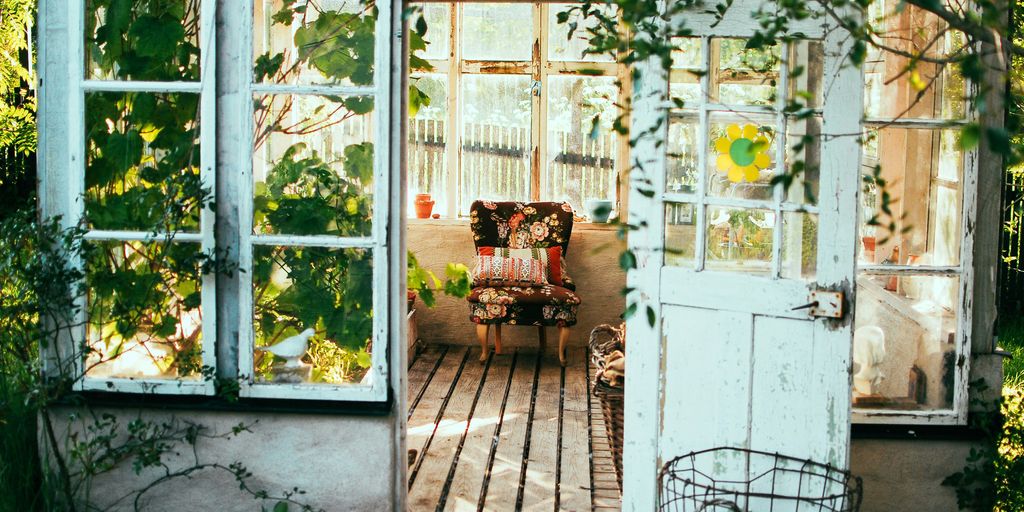How to Rent a Yurt for Your Garden: A Complete Guide
Setting up a yurt in your garden can be a fantastic way to add extra living space, start a glamping business, or enjoy a unique camping experience. This guide will walk you through everything you need to know, from choosing the right yurt to understanding legal requirements, preparing your garden, setting up utilities, and making your yurt comfortable and practical.
Key Takeaways
- Setting up a yurt can provide additional living space or a unique camping experience.
- Understanding legal requirements and permissions is crucial before installing a yurt.
- Proper preparation of the garden, including foundations and decking, ensures stability and comfort.
- Setting up utilities like electricity, plumbing, and heating makes the yurt functional year-round.
- Interior design and smart storage solutions can make living in a yurt both comfortable and practical.
Choosing the Right Yurt for Your Garden

Different Types of Yurts
When it comes to yurts, there are several types to choose from. Traditional Mongolian yurts, also known as gers, have a classic design with wooden frames and felt coverings. Modern yurts, on the other hand, often use more advanced materials like canvas and metal. Each type has its own charm and benefits, so think about what suits your garden best.
Factors to Consider When Choosing a Yurt
Picking the right yurt involves considering a few key factors. First, think about the size. A larger yurt is great if you plan to use it as a permanent living space, while a smaller one might be better for occasional use. Also, consider the climate in your area. Some yurts come with extra insulation for colder weather. Don’t forget to check the quality of materials and the reputation of the manufacturer.
Where to Buy or Rent a Yurt
You can find yurts for sale or rent from various suppliers. Some companies specialise in custom-built yurts, while others offer more affordable, pre-made options. It’s a good idea to shop around and compare prices. You might also want to visit a local yurt specialist for advice. They can help you find the perfect yurt for your needs.
Understanding Legal Requirements and Permissions
Planning Permission for Yurts in the UK
When thinking about setting up a yurt in your garden, you might wonder, do I need planning permission for glamping pods? In short, the answer is usually ‘yes’. The local council will need to be consulted, and an application will need to be submitted. They will look at things like the size and location of the yurt, its impact on the area, and any safety concerns. This process can be lengthy and costly, so make sure to consider all your options before moving forward.
Building Regulations and Safety Standards
Building regulations are another important aspect to consider. These rules ensure that your yurt is safe and meets certain standards. This includes things like fire safety, structural stability, and insulation. It’s a good idea to check with your local authorities to understand what specific regulations apply to your area.
Consulting with Local Authorities
Before you start any work, it’s crucial to talk to your local authorities. They can provide guidance on planning permission and building regulations. This step can save you a lot of time and hassle in the long run. Plus, they can offer advice on any other legal requirements you might need to meet.
Preparing Your Garden for a Yurt
Selecting the Ideal Location
Choosing the right spot for your yurt is crucial. Spend some time observing how the sun moves around your garden. Look for areas that get plenty of sunlight but also have some shade during the hottest parts of the day. This balance is key to making your yurt comfortable. Also, consider the natural water flow in your garden. Areas that receive more water naturally can help with sustainability.
Constructing Foundations and Decking
A solid foundation is essential for your yurt. You can opt for a concrete base, wooden decking, or even a gravel pad. Each option has its pros and cons:
- Concrete Base: Very stable but can be expensive.
- Wooden Decking: Offers a natural look but requires maintenance.
- Gravel Pad: Affordable and good for drainage but less stable.
Make sure the foundation is level and strong enough to support the yurt.
Ensuring Proper Drainage and Ventilation
Good drainage is vital to prevent water from pooling around your yurt. You can create a slight slope away from the yurt to direct water flow. Additionally, proper ventilation is important to keep the interior fresh and prevent mould. You can install vents or windows that can be opened to allow air to circulate.
Preparing your garden well can make a huge difference in how comfortable and practical your yurt will be. Take the time to get it right, and you’ll enjoy your new space even more.
Setting Up Utilities and Facilities
When setting up a yurt in your garden, it’s important to think about utilities and facilities to make it comfortable and practical. Depending on how you plan to use your yurt, you might need to install electricity, plumbing, and other amenities. Let’s dive into the details.
Electricity and Lighting Options
Having electricity in your yurt can make a big difference. You can choose between solar panels, wind turbines, or connecting to the main grid. Solar panels are a great eco-friendly option, especially if you get a lot of sunlight. Wind turbines can also be effective if you live in a windy area. If you prefer a more traditional approach, connecting to the main grid might be the easiest solution.
Plumbing and Water Supply
For plumbing, you have a few options. You can install a simple water tank or connect to the main water supply. A water tank is a good choice if you want to be more self-sufficient. If you decide to connect to the main water supply, make sure to check local regulations first. Don’t forget about waste management; a composting toilet can be a great eco-friendly option.
Heating and Insulation Solutions
Keeping your yurt warm in the winter and cool in the summer is crucial. Insulation is key here. You can use wool, foam, or even recycled materials for insulation. For heating, consider a wood-burning stove or electric heaters. A wood-burning stove adds a cosy feel and is great for colder months. Electric heaters are convenient but might be more expensive to run.
Setting up utilities and facilities in your yurt might seem like a lot of work, but it’s worth it for the comfort and convenience it brings.
Making Your Yurt Comfortable and Practical
Interior Design and Furnishing Tips
When it comes to making your yurt feel like home, interior design is key. Think about adding cosy rugs, cushions, and even small furniture pieces. These touches can transform your yurt from a simple tent into a welcoming space. Don’t forget to use multi-functional furniture to save space.
Maximising Space and Storage
Space can be a bit tight in a yurt, so it’s important to get creative with storage. Use vertical space by adding shelves and hooks. Under-bed storage is also a great way to keep things tidy. Remember, a clutter-free yurt is a happy yurt!
Living in a Yurt All Year Round
Living in a yurt all year round is totally doable with the right preparations. Make sure your yurt is well-insulated to keep it warm in winter and cool in summer. Proper ventilation is also crucial to avoid dampness. With some planning, your yurt can be a comfortable home no matter the season.
Exploring the Benefits of Garden Yurts
Setting up a yurt in your garden can be a fantastic way to add extra living space, start a glamping business, or simply enjoy a unique camping experience. Let’s dive into the benefits of having a garden yurt.
Creating Additional Living Space
A garden yurt can be a great solution if you need more room but don’t want to build an extension. Yurts typically have a circular layout, which maximises the usable area inside. You can use this space as a guest room, a home office, or even a cosy retreat.
Starting a Glamping Business
If you’ve ever thought about starting a glamping business, a yurt is a perfect choice. They are eye-catching and provide a unique experience for guests. Plus, they are relatively easy to set up and maintain. You can offer a comfortable and memorable stay that stands out from traditional camping.
Enjoying a Unique Camping Experience
For those who love camping but want a bit more comfort, a yurt offers the best of both worlds. You get the feel of being close to nature without sacrificing the comforts of home. With proper insulation and heating, you can even enjoy your yurt all year round.
A garden yurt is not just a structure; it’s a versatile space that can adapt to your needs, whether for personal use or as a business venture.
Garden yurts offer a unique and cosy way to enjoy the outdoors. They provide a comfortable space that blends seamlessly with nature, making them perfect for a relaxing retreat. Curious to learn more? Visit our website to discover how you can experience the charm of garden yurts for yourself.
Conclusion
In summary, renting a yurt for your garden can be a fantastic way to add extra living space, start a glamping venture, or simply enjoy a unique outdoor experience. By paying attention to key aspects like the foundation, utilities, and year-round living, you can make sure your yurt is both cosy and functional. Whether you’re looking for a temporary retreat or a more permanent setup, a yurt offers a versatile and charming solution. Happy yurt renting!
Frequently Asked Questions
What are the legal requirements for installing a yurt in a UK garden?
In the UK, you may need planning permission to install a yurt in your garden. It’s important to check with your local planning office to understand the specific requirements and regulations in your area.
Is planning permission required to erect a yurt on private property in the UK?
Yes, in many cases, planning permission is required. Always consult with your local planning authority to ensure you comply with all necessary regulations.
What types of yurts are available for gardens?
There are various types of yurts, including traditional Mongolian yurts and modern yurts made from different materials. Each type has its own benefits, so choose one that fits your needs and preferences.
How do I prepare my garden for a yurt?
To prepare your garden, choose a flat and stable location, build a solid foundation or decking, and ensure proper drainage and ventilation. This will help make your yurt comfortable and durable.
What utilities and facilities can I set up in a yurt?
You can set up electricity, lighting, plumbing, and heating in a yurt. It’s important to plan these utilities carefully to make your yurt comfortable and functional.
Can I live in a yurt all year round?
Yes, you can live in a yurt all year round if you properly insulate and heat it. Make sure to choose suitable materials and set up the necessary facilities to ensure comfort in all seasons.





